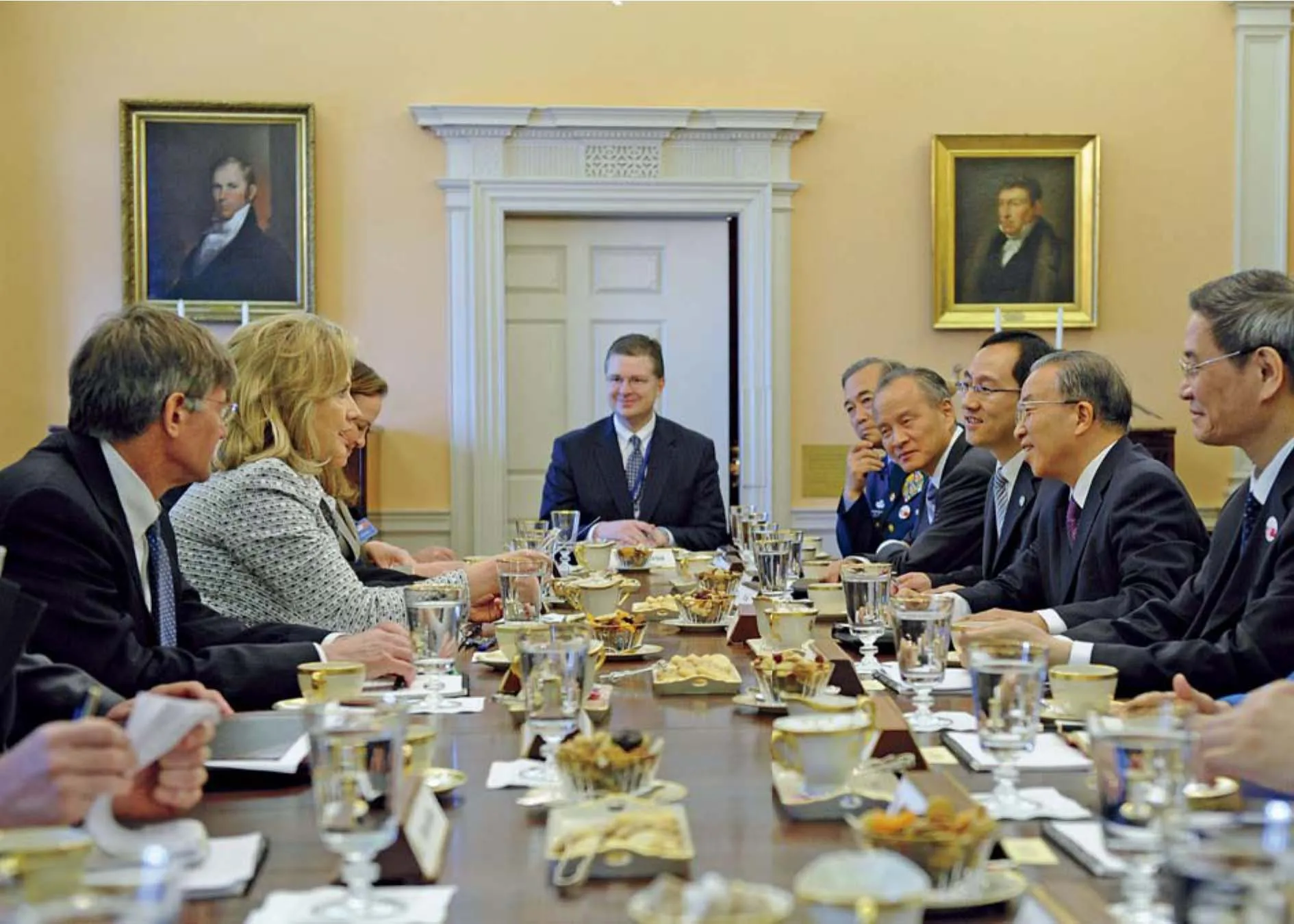Smoothing Troubled Waters
2011-10-14ByPIINFENKOK
By PIIN-FEN KOK
Smoothing Troubled Waters
By PIIN-FEN KOK
Crucial dialogue makes progress toward resolving Sino-U.S. issues and implementing commitments

On May 9 and 10,the United States and China held the third round of their Strategic and Economic Dialogue (S&ED). This might well have been the most significant iteration of the dialogue since its launch in 2009.
This round of talks had two key objectives. The fi rst was to build on the upturn in Sino-U.S. relations created by Chinese President Hu Jintao’s visit to the United States in January 2011. The preceding year had been a tumultuous one that saw a suspension of military ties over U.S. arms sales to Taiwan, as well as tensions over the Dalai Lama, maritime issues, North Korea,and human rights. While one state visit alone could not be expected to magically resolve all those differences, it did facilitate progress in addressing some of them, for example, on North Korea, while helping the two countries rede fi ne the tone and state of their relationship.
A second objective of the S&ED was to implement the commitments agreed upon by President Hu and President Barack Obama during the January visit, as encapsulated in a Joint Statement that reaf fi rmed the Sino-U.S. partnership and outlined several areas of cooperation,including new areas such as cyber security.
The two objectives were largely achieved. Despite obvious lingering differences over issues such as human rights and currency policy, both governments made it a point to publicly maintain a positive tone about the meetings. Also, some concrete steps were taken to improve economic, military and regional relations.
Moving forward, the key for both countries is to work on advancing the S&ED process, while being mindful of the need to continue managing the challenges to the bilateral relationship beyond these talks.
For example, both sides should build on the measured progress achieved by the S&ED in promoting economic trust and clean energy cooperation, and seek to bring about trust-building milestones in other aspects of the Sino-U.S. relationship, particularly in the political and security spheres.
The latest S&ED talks have shown an encouraging movement in that direction. The launch of the Strategic Security Dialogue(SSD), which involved for the fi rst time senior military representatives from both sides,will facilitate much-needed civilian-military coordination aimed at preventing miscalculations between the two countries.
The success of a high-level dialogue process like the S&ED is gauged not only by what is generated during the few days of intensive talks, but also by how it affects the way both governments manage the bilateral relationship long after the talks conclude

OPEN DISCUSSIONS:Chinese S tate Councilor Da i Bingguo (second right) and U.S.Secretary of State Hillary Clinton co-chair t he strategic track of the third round of the S ino-U.S.Strategic a nd Economic Dialogue in Washington,D.C. on May 9
In providing a boost to the recently resumed military-to-military relations between China and the United States, the SSD also set the stage for the visit to the United States on May 15-22 by Chen Bingde, Chief of the General Staff of the People’s Liberation Army. Indeed, the day after the S&ED was concluded, China’s Ministry of National Defense expressed its commitment to a “new type” of military ties with the United States.
Another positive development is the newly established U.S.-China consultation on the Asia-Pacific region. This consultation draws on the Asia-Pacific focus of January’s Joint Statement and will be useful for addressing mutual perceptions, including military perceptions, in the region. But it needs to be carried out in concert with assurances by the two countries to the rest of the region about their strategic intentions.
As the S&ED continues to mature, it could be further utilized by the United States and China, in conjunction with other dialogue processes, to foster greater understanding and manage differences over other more dif fi cult areas of distrust.
These areas would include Taiwan and human rights, where consensus will remain elusive but the potential for fallout is great.They should also include horizon issues such as cyber security and space, on which cooperation agreed upon fairly recently by the two governments continues to be hampered by mutual suspicions.
All things considered, the success of a high-level dialogue process like the S&ED is gauged not only by what is generated during the few days of intensive talks, but also by how it affects the way both governments manage the bilateral relationship long after the talks conclude.
In large part due to concerted efforts by both sides to ratchet down the harsh rhetoric that became increasingly commonplace last year, Sino-U.S. relations have veered back on track for now. However, potential pitfalls and challenges remain.
With the dust having barely settled on the S&ED, China is already lashing out over Secretary Hillary Clinton’s criticism of its human rights record in an interview published during the talks.
Also, the upcoming election season in the United States and leadership transition in China give rise to the real possibility of increased political rhetoric from both sides.In the United States, this would mean greater negative attention on China as a campaign issue, even as certain members of Congress continue to take China to task on issues such as human rights, the value of the renminbi,and trade policies. In China, one might expect stronger statements on the United States from certain individual of fi cials seeking to project greater policy toughness to their domestic constituents.
Meanwhile, the U.S. Treasury Department and the Pentagon are expected to issue their annual reports to Congress on currency policies and China’s military and security developments, respectively. These two reports have been delayed for the second year in a row,re fl ecting a goodwill gesture by the Obama administration, but their release and that of other reports, such as the U.S.-China Economic and Security Review Commission’s annual report in the fall, will likely trigger exchanges of protestations between the two governments, as they have in past years.
And if history is any indicator, militaryto-military relations will continue to be susceptible to sudden disruptions over issues such as U.S. arms sales to Taiwan, a key source of contention that will be ampli fi ed in the run-up to elections in Taiwan. The true breakthrough of the SSD and other defense exchanges would be to capitalize on this professed new state of military ties and fi nd a better way to manage the military relationship by moving it past its current on-again-offagain nature.
The United States and China have described their relationship as “vital and complex.” This relationship cannot be defined by an S&ED or a series of summits alone.Such exchanges, however, can help to create new avenues for trust-building and cooperation, while setting the appropriate tone and approach for both countries to navigate whatever obstacles come their way. The latest round of the S&ED has done just that. It is up to both sides to make the best out of it and move us away from, not back to, the fractious state of affairs in 2010.
(Viewpoints in this article do not necessarily represent those ofBeijing Review)
The author is a China program associate with the New York-based EastWest Institute
